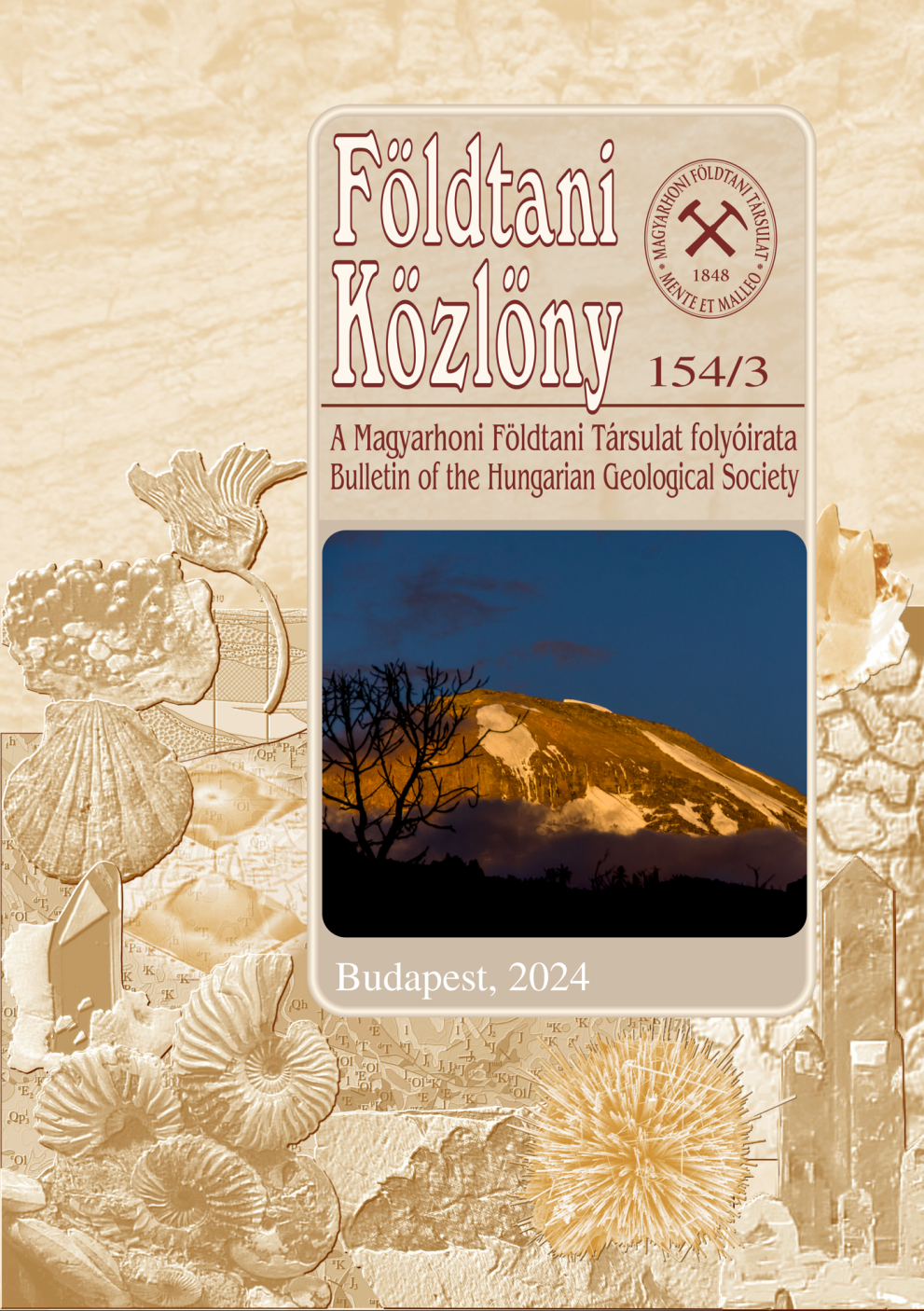Complex sedimentological, geochemical and geophysical study of the Kápolna-hegy spring-cone (Buda Hills, Hungary)
Abstract
In the case of travertine-depositing systems, the factors causing carbonate precipitation are known to change continuously as the distance from the feeder channel increases. At the orifice it is mainly chemical precipitation which is
dominant, while further downstream the respective activities of microbial organisms and higher-order plants enhance precipitation (CHAFETZ & FOLK 1984). These features can be followed in the travertine outcrop of the Kápolna Hill near
the city of Budapest. Based on sedimentological, geochemical and geophysical investigations, the depositional environment of this travertine site could be reconstructed. Laminated, thick-bedded oncoidal and thick-bedded
phytoclastic facies were described.
The laminated facies identified at the southern quarry face could have been precipitated close to the vent, while the thick-bedded phytoclastic facies, which builds up the northern quarry face, was probably formed in a lacustrine
environment further away from the vent. Based on the microfacies studies mentioned in this paper, it was also possible to identify a similar thick-bedded oncoidal lithotype. The stable isotope data set suggests that the parent fluid of the Kápolna Hill travertine was part of the same regional flow system which was responsible for (i) the formation of the hydrothermal calcite veins of the Buda Hills and (ii) the deposition of other Pleistocene travertine occurrences in this area. Based on the δ18O values of the travertine occurrences, the temperature of this fluid was calculated as 37.6 °C. Using a geoelectric method (i.e. multielectrode profiling) a low-resistivity clay layer was oberved below the high-resistivity travertine; the former is probably a part of the Kiscell Clay Formation (which is typical for this area). Based on the resistivity values, the measured section may represent a pool which was part of a pond. This idea was supported by the sedimentological observations. According to the morphology of the occurrence, the micropetrography of the travertine and the information provided by the geoelectric profiles, the Kápolna Hill travertine is a thermogene-thermometheogene lacustrine sediment and can be regarded as a transition between a spring cone and a lake.











